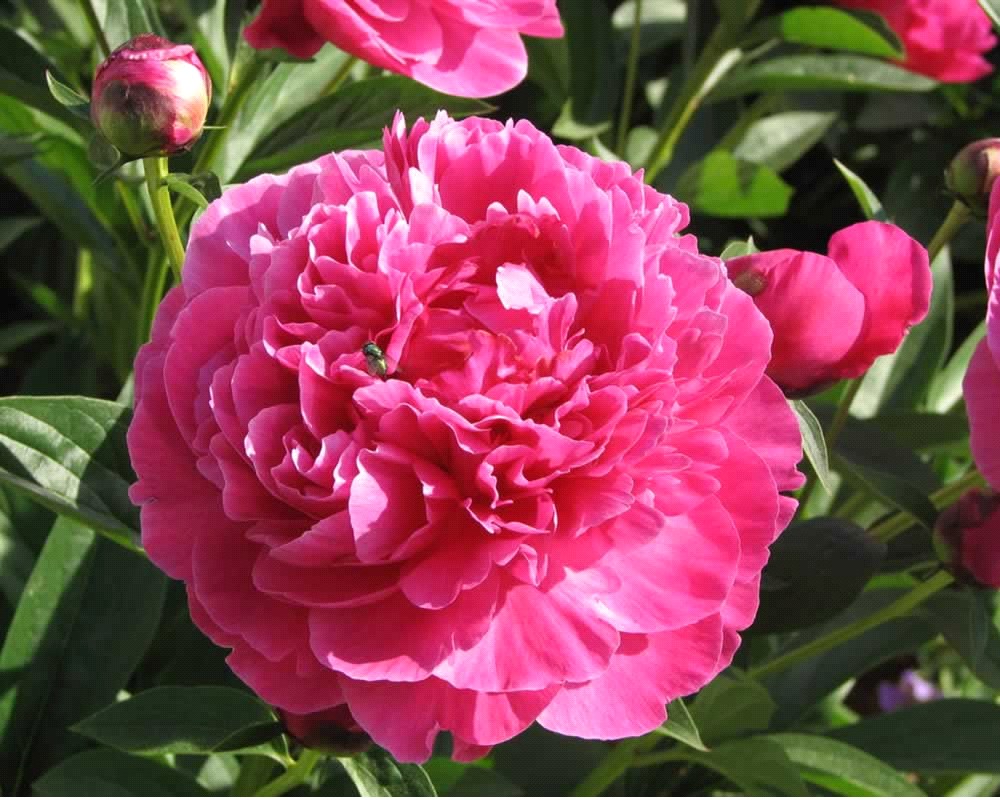CARNATIONS
Carnations are very long lasting flowers and are popular as boutonnieres, in corsages, bouquets, and in a wide range of floral arrangements. Carnations are popularly called Carnations (Dianthus caryophyllus) and are one of the most popular florists' flowers, favored on special occasions, especially Mother's Day and weddings.
Carnations are also commonly referred to by their scientific name, "Dianthus", the name given by the Greek botanist Theopharastus. Carnations got the name Dianthus from two Greek Words - "dios", referring to the god Zeus, and "anthos", meaning flower. Carnations are thus "The Flowers of God".
The single flowers of the Carnations species, Dianthus caryophyllus have 5 petals and vary from white to pink to purple in color. Border Carnation cultivars may have double flowers with as many as 40 petals. When grown in gardens, Carnations grow to between 6 and 8.5 cm in diameter.
Petals on Carnations are generally clawed or serrated. Carnations are bisexual flowers and bloom simply or in a branched or forked cluster. The stamens on Carnations can occur in one or two whorls, in equal number or twice the number of the petals. According to Christian legend, Carnations first appeared on earth as Jesus carried the Cross. Carnations sprang up from where the Virgin Mary's tears fell as she cried over her son's plight
Facts about Carnations
Types of Carnations
Carnation cultivars are mainly of three types:
Large flowered Carnations - one large flower per stem.
Spray Carnations (Mini Carnations) - with lots of smaller flowers
Dwarf flowered Carnations - several small flowers on one stem.
Carnations - Meanings
Carnations come in wide variety of colors and interestingly carnations in different colors are found to have different meanings as shown in the following table: Carnations What they Mean Carnations in general Fascination, Woman's Love Pink Carnations Mother's Love Light red Carnations Admiration Dark red Carnations Deep Love and Woman's Affection White Carnations Pure Love and Good Luck Striped Carnations Regret, Refusal Green Carnations St. Patrick's Day Purple Carnations Capriciousness Yellow Carnation Disappointment, Dejection Carnations have become the most popular florist flowers because they are the symbols of expressing many feelings as above. Hence, it is recommended that one should check the meaning of the color of carnations when you gift them. Growing Carnations:
· Carnations grow readily from cuttings made of the suckers that form around the base of the stem, the side shoots of the flowering stem, or the main shoots before they show flower-buds
· The cuttings from the base make the best plants in most cases
· These cuttings may be taken from a plant at any time through the fall or winter, rooted in sand and potted up.
· They may be put in pots until the planting out time in the spring, whic usually in April, or anytime when the round is ready to handle.
· The soil should be deep friable and sandy loam.
Carnation plant care:
· Carnations need some hours of full sun each day and should be kept moist.
· Avoid over-watering as it may tend to turn the foliage yellow.
· Spent flowers should be removed promptly to promote continued blooming.
· Quality of the bloom rests on the soi and irrigatiog aspects for growing carnations.
· Those who grow carnations should know the importanc of pinching, stopping and disbudding.
· At the time of plucking the carnations, leave three to four nodes at the base and remove the stem.
· The plant foliage should not be exposed to the direct heat of the